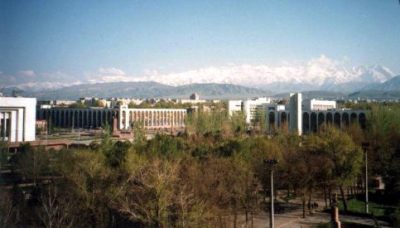Kyrgyzstan – Next in Line for a Colour Revolution?

All Global Research articles can be read in 51 languages by activating the Translate Website button below the author’s name.
To receive Global Research’s Daily Newsletter (selected articles), click here.
Follow us on Instagram and Twitter and subscribe to our Telegram Channel. Feel free to repost and share widely Global Research articles.
***
The accession of Kyrgyzstan to chair of the Commonwealth of Independent States for 2023 should bode well for the central Asian republic. Having not held the position since 2016, Kyrgyzstan’s new role in the CIS, a transnational Eurasian body intended to foster economic and military development, will likely spur economic growth in what is the poorest country in the region.
Going by recent trends related to the two most recent chairs of the CIS however, Belarus in 2021 and Kazakhstan last year, it also may mean that Bishkek has now been placed in the sights of the regime change lobby.
In August 2020, following Belarusian President Alexander Lukashenko’s electoral victory over opposition candidate Sviatlana Tsikhanouskaya, a US-orchestrated regime change operation would be launched against Minsk, owing to it being Moscow’s sole European ally, its nationalised state industries, and in what was perhaps the most pertinent factor at the time, Lukashenko’s refusal to implement the lockdown measures as part of the World Economic Forum’s Great Reset initiative.
Violent protests, backed by US NGO the National Endowment for Democracy, would sweep the former Soviet state in the aftermath of the election, continuing for several months before finally being quelled by Minsk, with Lukashenko’s government remaining intact.
This would not be a fate shared by neighbouring Ukraine, with Kiev having been subjected to the Euromaidan regime operation in 2013-14 which resulted in a Western-backed coalition coming to power. A situation, that had it occurred in Belarus in 2020, would have resulted in the precarious situation where Russia’s entire western border was composed solely of NATO-members and allies.
Likewise, in Russia’s southern neighbour Kazakhstan, protests in response to rising fuel prices in early 2022 would rapidly escalate into extreme violence in the space of several days, resulting in the deaths of 18 members of the Kazakh security services, including two who were decapitated.
The sudden, violent nature of the Kazakh protests, as well as their coordinated coverage by the corporate media, bore all the hallmarks of a Western-backed colour revolution. Indeed, this was effectively confirmed as such by a May 2020 policy document published by neoconservative think tank the RAND Corporation, which envisaged the destabilisation of Kazakhstan as having a spill-over effect into neighbouring Russia, the 7,000km long border between both nations being the 2nd largest in the world after the US and Canada.
This is where the potential for a colour revolution attempt in Kyrgyzstan comes into play.
Though a small country, Kyrgyzstan’s geographical location, to the west of the Xinjiang region of China, means that a Maidan-style colour revolution in the country would ultimately have a spill-over effect into its larger eastern neighbour, specifically into a region known for extremist activity, such as that of ETIM, a group which previously fought with the Al-Nusra Front in Syria, and which bombed the Chinese Embassy in Bishkek in a 2016 attack.
Indeed, destabilising Kyrgyzstan as a means to trigger a Domino effect which would ultimately destabilise China, ties in perfectly with the recent activity of the regime change lobby.
Just last month, protests against Beijing’s ‘zero-Covid’ policies quickly escalated into demands for the removal of Xi Jinping from office, a situation conspicuously envisaged by Open Society founder George Soros in a January 2022 address to the Hoover Institution. Despite also receiving the support of the NED, this attempt at regime change would quickly falter due to Beijing acceding to the demands of legitimate protesters and removing lockdown restrictions, resulting in the corporate media switching to a ‘Covid is spreading again’ narrative.
However, with Kyrgyzstan’s new role as chair of the CIS, and what happened with the two previous holders of the position, 2023 may see another attempt at regime change in China, one that could possibly begin in its smaller western neighbour.
*
Note to readers: Please click the share buttons above or below. Follow us on Instagram and Twitter and subscribe to our Telegram Channel. Feel free to repost and share widely Global Research articles.
Gavin O’Reilly is an activist from Dublin, Ireland, with a strong interest in the effects of British and US Imperialism. Secretary of the Dublin Anti-Internment Committee, a campaign group set up to raise awareness of Irish Republican political prisoners in British and 26 County jails. His work has previously appeared on American Herald Tribune, The Duran, Al-Masdar and MintPress News. He is a regular contributor to Global Research. Support him on Patreon.
Featured image: Bishkek (Licensed under CC BY-SA 3.0)

